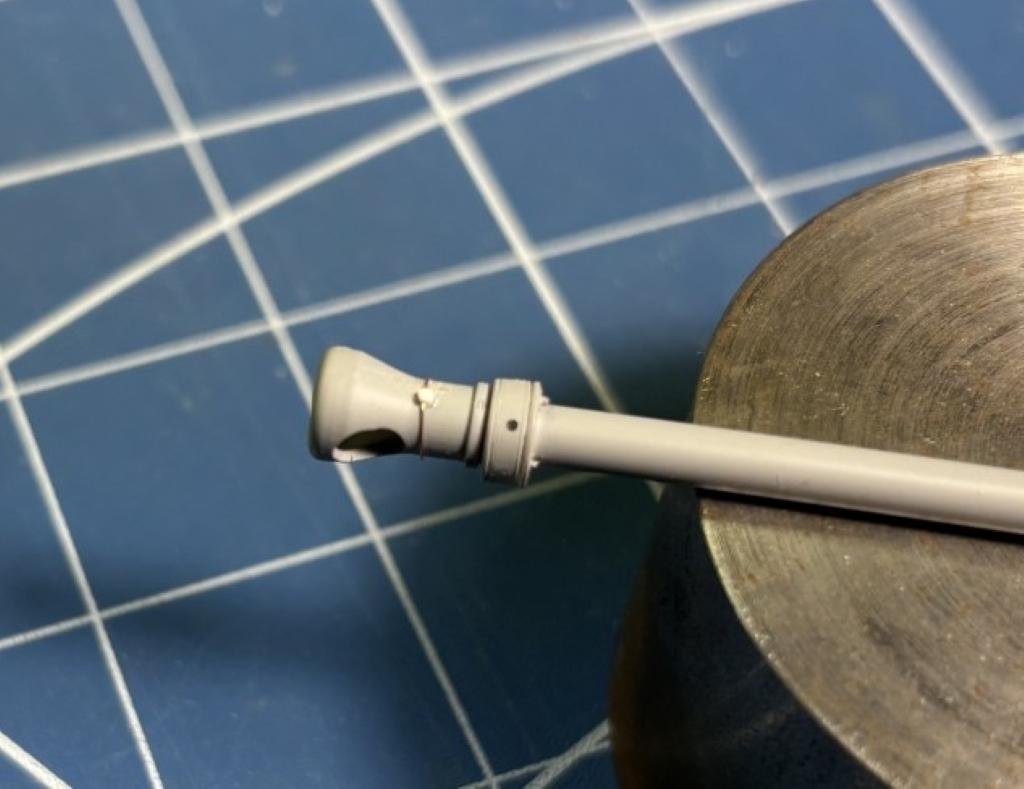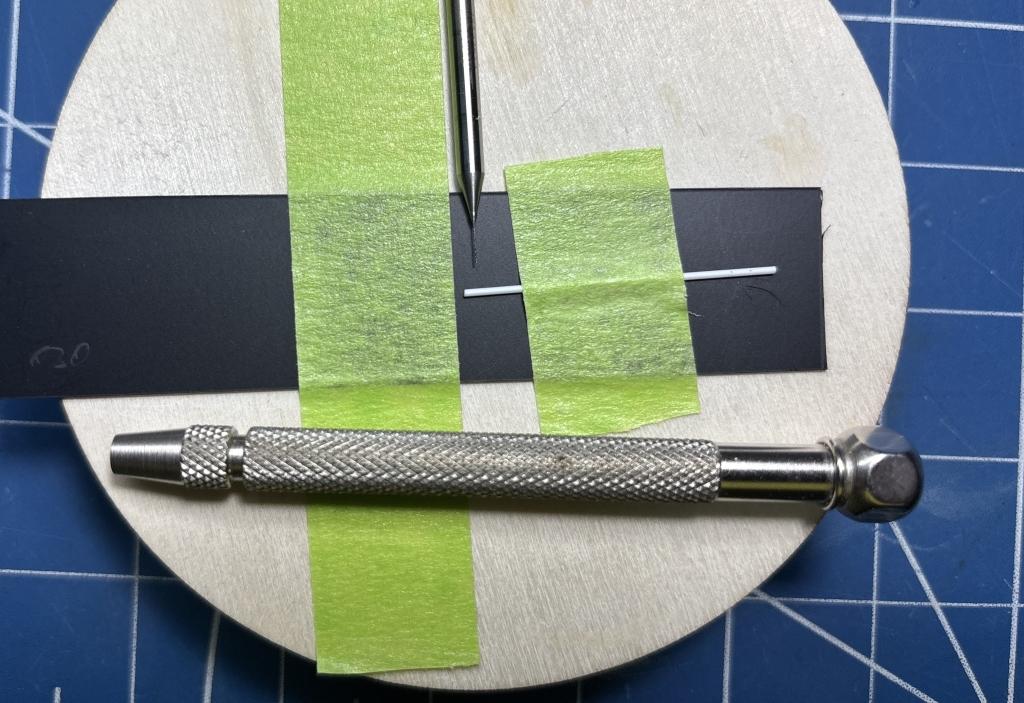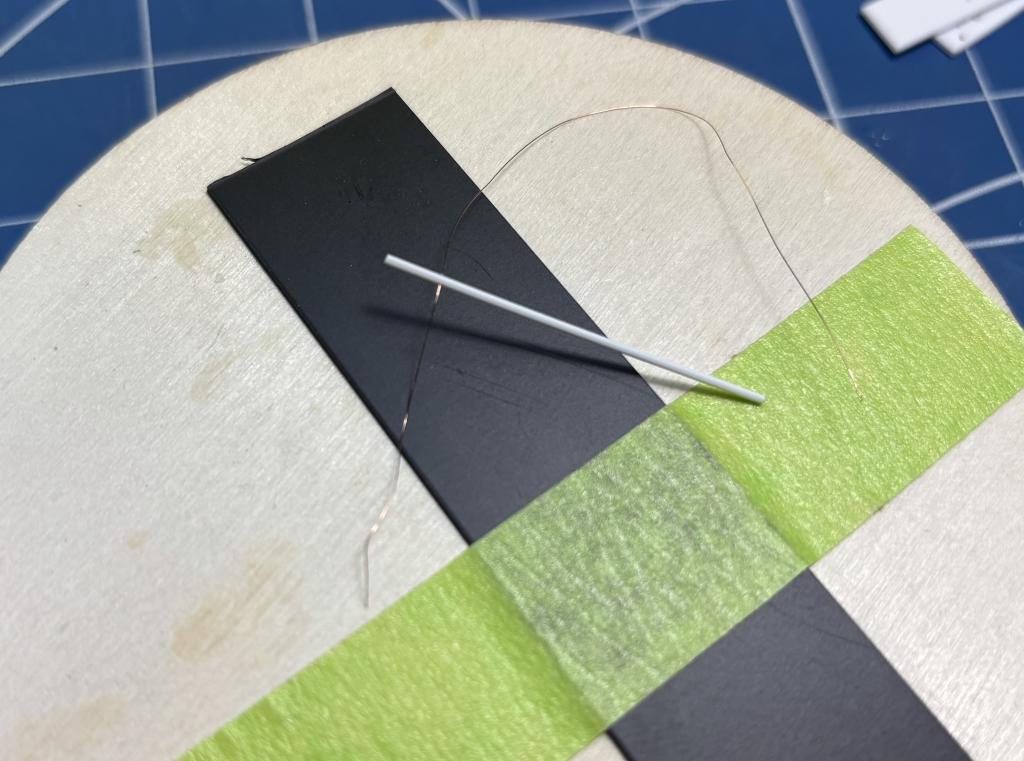
ColonelKrypton
Members-
Posts
388 -
Joined
-
Last visited
Previous Fields
-
Are You Human?
yes
-
Scale I Build
whatever suits
Profile Information
-
Full Name
Graham Collins
Recent Profile Visitors
2,206 profile views
ColonelKrypton's Achievements

MCM Avid Poster (5/6)
-
Indeed I did. Those BFF's and disconnect with the old grey matter. cheers, Graham
-
Another paint issue.
ColonelKrypton replied to Donny's topic in Model Building Questions and Answers
That is a really a misnomer. As most are aware, a paint or coating is comprised of three basic ingredients - pigment, that stuff which gives the paint it's colour, binder or carrier - that stuff which makes the paint or coating a paint or coating, and solvents - that stuff which keeps the paint liquid and ready to use. Acrylic paints use an acrylic resin as it's binder or carrier. An acrylic resin can be formulated to use a hydrocarbon carrier OR a water based carrier. Vallejo, AK Interactive, Citadel, Army Painter, common craft store acrylics use an acrylic resin having a water based carrier, hence water based acrylic. Tamiya Acrylics, SMS paints, Mr Hobby Aqueous, use and acrylic resin having a non water based carrier, hence often referred to as acrylic lacquers which is also a misnomer. Incidentally, the solvents used in non-water based acrylic paints are organic solvents, that is they contain carbon. Water is a non organic solvent as it does not contain carbon. I did a quick search for the safety data sheets (SDS) for the SMS paints and found these at https://www.scalemodeller.com.au/pages/msds thinner: https://cdn.shopify.com/s/files/1/0039/5565/4765/files/Acrylic_Thinner_MSDS_1.pdf paint: https://cdn.shopify.com/s/files/1/0039/5565/4765/files/ACRYLIC_LACQUER_SDS_3402_v1.pdf These paints, based on the chemical ingredients listed in their SDS show that they are more like what we might consider a lacquer in that they contain solvents like tolene, naphtha, acetone, and ethanol. The SDS for the paints show that it also contains a small bit of methyl ethyl ketone ( MEK ). It is not surprising that Don encountered some issues. To be fair, water based acrylics like Vallejo do dry very quickly but even when dry to the touch they are not fully cured and require at least 24 hours and in some cases even longer before they reach the point of being fully cured. I have in the past been able to apply non water based acrylic ( i.e. clear coats ) over water based acrylics with no ill effects but only after a sufficient period of time to allow the water based acrylic to fully cure. As a matter of course, I always let any water based acrylics cure for two days. However, I have no first hand experience using SMS paints. Here is a very interesting Youtube video in which the author goes into some detail about acrylic paints and is well worth the half hour spent watching: cheers, Graham -
Excellent idea. I am going to have to start doing the same. Nor do I and even in brass and aluminum with the bit held in a quality pin vice and the work piece held steady and not in my BFF ( Big Fat Fingers ). Carbon steel or high speed steel ( HSS ) wire size number or metric drills are far less brittle than those carbide bits but I do break one from time to time. #80 is approximately 3.5mm diameter and #85 about 0.3mm. That is typically true for me as well. I have a pin vise with a 0.5mm ( i.e. #76 or 0.020") on my workbench and it gets used all the time for making holes for brass wire which I use to pin parts together. For a recent project I took up the challenge of seeing if I could reproduce in miniature a small detail which I would normally have not bothered with. One of the issues with researching full size vehicles which you want to build a miniature of, is that the more you look, the more you see and once your see some interesting wee little detail you just have to try and replicate it in scale even if for nothing more than the challenge. This is the muzzle brake for a QF six pounder gun on a 1/35 scale Churchill tank. The hole in the collar ( actually a counter weight ) is (I think) 0.5mm ( #76), The largish hex bolt head to the left is the bolt which retains the muzzle brake on the barrel after the brake has been screwed on, The retaining bolt's safety wire is that 0.1mm brass wire I described in a previous post. In the end, not as a difficult a task as I first thought. Nothing ventured, nothing gained was never so true. cheers, Graham
-
I wasn't so lucky but bought mine on Amazon on sale. Fits any cutting tool having a 1/8" shaft. I also use it to hand hold small burrs for delicate work. cheers, Graham
-
number 1 is always true and happens all the time. number 2, I don't usually return anything and (see number 3) number 3, better to have and not need than not have and need. Having something and duplicates of something I never thought I would use but once has gotten me out of a pickle more times than I can count on my fingers and toes. cheers, Graham
-
I was recently working on a project and wanted to drill some very small holes. A 0.15mm hole in a piece of 0.6mm hex shaped piece of plastic was the target. The 0.15mm hole was needed to feed a piece of 0.1mm brass wire through. I sourced some of the common Chinese carbide PCB drill from amazon and gave it a try just to see if I could indeed manage the task. After a bit of fussing and working my way down in size from 0.4mm, I did in fact manage to make my 0.15mm hole and just to prove to myself that it was no fluke I repeated the task several times. Admittedly, I did break three 0.15mm bits, one in use and the other two from just being careless. Best holder for these style of drill bits having a 1/8" shank is the holder of my Starrett 70A scriber. Used only the weight of holder and bit with the index finger of my left hand steadying it vertically and carefully turning with the fingers of my right hand. Holding the piece to be drilled is vitally important. You are doomed to failure if you try to hold it in your fingers or loose on the bench. Piece with hole and 0.1mm brass wire through that hole: Tamiya markets some 0.2mm high speed steel (HSS) bits that work very well and are not as easily broken as these carbide bits. I never broken one but I have lost one by being careless when putting it down on the workbench where it simply vanished into the clutter never to be seen again. cheers, Graham
-
Hardener for acrylics?
ColonelKrypton replied to Monty's topic in Model Building Questions and Answers
No it isn't. Nor is it so hard to communicate without resorting to ceaseless streams of short forms, abbreviations, popular slang and single syllable grunts which have the opposite effect by making it more difficult to communicate clearly and easily. -
MPC’S COLOR ME GONE 1966-1968 DODGE CHARGER FUNNY CARS
ColonelKrypton replied to M W Elky's topic in Drag Racing
I remember the 67 (according to scalemates) issue of the Color Me Gone funny car with the neat cut away x-ray view and the MPC 67 issue of Mr. Unswitchable. I always wanted the Color Me Gone Charger but I did get the Mr. Unswitchable GTO. Good memories. Wouldn't it be nice if both were re-issued again? Thank you for sharing. cheers Graham -
Very cool. My favourite Firebird year and body style, colour too. cheers, Graham
-
Very nicely done. They may be nostalgia now but there is nothing quite like a good looking front engine dragster. Hands down nicer looking than what passes for top fuel these days. cheers, Graham
-
Tamiya spray paints in CANADA?
ColonelKrypton replied to dino246gt's topic in Car Kit News & Reviews
Not quite, this is a snippet from Angelo at Sunwardhobbies.com email The Acrysion line was not mentioned but most of the Aqueous paints - bottles and spray are. The Acrysion paints are not that common. I know of only a few hobby store which stock them and they cater mostly to the Gunpla/Gundam crowd. They are good paints but the range is rather limited. It will be interesting to see where Mr Hobby/Creso goes with line paints. Not so. I did a lot of research digging up whatever safety data sheets I could find on the Mr Color, Aqueous, and Acrysion products. The Aqueous paints and thinner, contrary to that implied by their name, are more the equivalent of the Tamiya X/XF acrylic paints. The Aqueous thinner is similar in composition to the Tamiya X-20A thinner and contains around 50% Isopropyl alcohol. You should not use alcohol based thinners and reducers with true water based acrylic paints. The Acrysion paints are closer to being a water based acrylic but their chemistry still differs from the true water based acrylics like Vallejo or AK 3G I compiled this short list from studying the safety data sheets: 2-BE is a common abbreviation for 2-butoxethanol which is the chemical in question. 2-BE is a solvent and has a secondary benefit as a surfactant: Mr Color Aqueous products - bottled paints and aerosols all contain 2-BE up to 10% Mr Color thinner contain 2-BE up to 10% Tamiya Lacquer thinner product 87077 contains 2-BE up to 10% Tamiya spray paints contain 2-BE up to 10% Mission Model Paints MMA thinner contain 2-BE up to 15% Tamiya lacquer thinner retarder type and Mr Color levelling thinner DO NOT contain 2-BE Tamiya X/XF acrylics DO NOT contain 2-BE Tamiya X-20A thinner DOES NOT contain 2-BE Mr Color Aqueous thinner DOES NOT contain 2-BE Mr Color paints - bottled and aerosols DO NOT contain 2-BE Remember, this is not a ban. It is a restriction on products that contain 2-BE that exceed prescribed limits. Legislation around 2-BE and other VOCS is a world wide issue. It is or may likely effect these products in the US. I have been told that Mr Hobby / Creso products are imported into the Canada through the US and if the US suppliers are being effect for exports to Canada it may not be long until the effect is felt in the US as well. cheers, Graham -
Tamiya spray paints in CANADA?
ColonelKrypton replied to dino246gt's topic in Car Kit News & Reviews
Still no word on when Tamiya spray paints will be available in Canada. You can still find old stock on some hobby store shelves but even that is disappearing. More recently Mr. Hobby products are running afoul of the same legislation as did the Tamiya spray paints. I received this from Angelo in his latest news email from Sunwardhobbies.com The chemical referred to in " higher concentration of a chemical" is 2-Butoxyethanol CAS number 111-76-2 ttps://en.wikipedia.org/wiki/2-Butoxyethanol It is not so much a complete ban as it is about controlling and limiting exposure. Depending on the intended use of a product which contains 2-Butoxyethanol or any other toxic substance for that matter, there are often limits set based on those intended uses. The overview document found in the following link lists product type uses and the specified limits of concentration on a by use basis in %w/w from as high as 22% to as low as 0.1% https://publications.gc.ca/collections/collection_2023/eccc/En14-510-2023-eng.pdf Aerosol paints and coatings for non-industrial use are unfortunately at the very low end of that scale. SDS's I have for the Tamiya aerosols indicate a concentration of 2-Butoxyethanol from 1% to 5%. The Mr Hobby products will likely have similar levels. cheers, Graham -
Very nice rendition of something from the time when rails where rails that where creative and interesting to look at and watch. cheers, Graham





